A visit to Greenland is a choose-your-own-level experience when it comes to trying the local cuisine. Wherever you travel, you’ll find lovingly prepared foods tied to rich Inuit culture and the environment to which the people are so close.
Most dishes are smoked, dried, or salted. Taste the national dish, Suaasat, or wild berries and other edible plants.
Here’s a guide to some of the unique food in Greenland you’ll find during your visit.
Suaasat
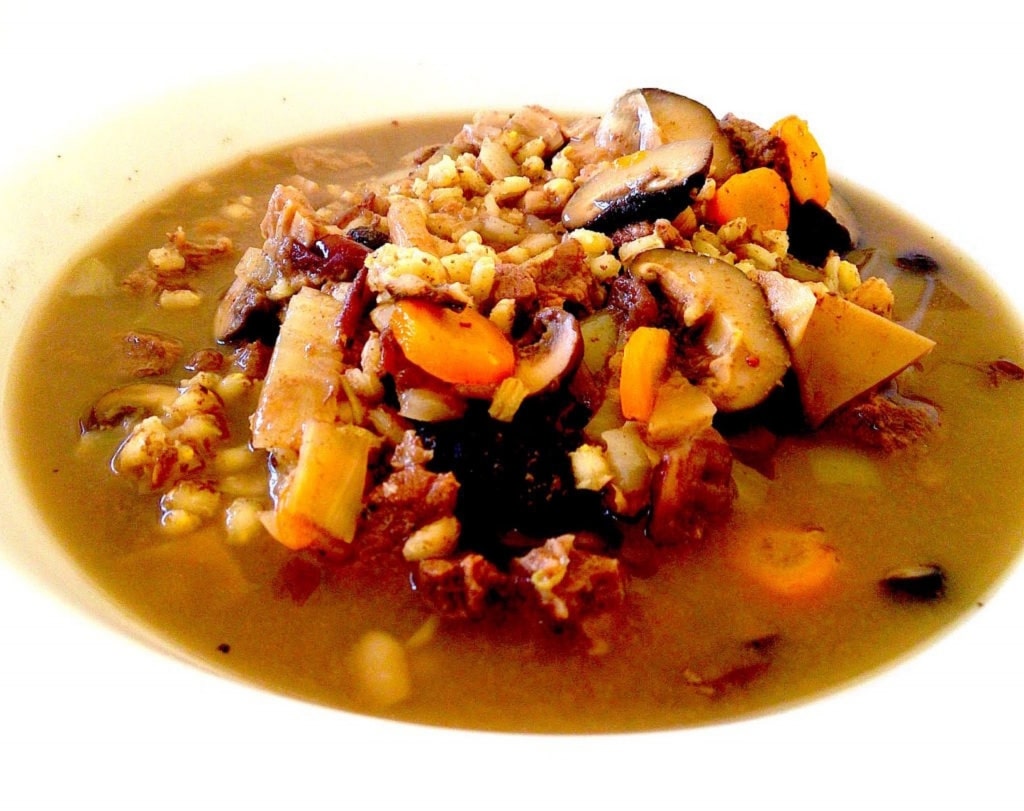
Suaasat Photo by distrita.com on Wikimedia Commons, licensed under CC BY-SA 4.0
The national dish of Greenland is Suaasat. The main ingredient is seal, a staple of Inuit cuisine. Suaasat is a homemade soup that consists of a thick broth made of seal meat, with barley and onions, or rice and onions. Salt, black pepper, and bay leaves are added for flavoring as well.
Although seal meat is typically the protein used, other versions may use whale meat, reindeer, caribou or sea birds if seal is not available.
This soup is traditionally served at Christmas, although it can be eaten throughout the year. This Greenlandic comfort food is a key item in the country’s cuisine and is meant to keep you full for hours.
Mattak
Whales are hunted in Greenland according to a quota granted by the International Whaling Commission (IWC) for “Aboriginal Subsistence Whaling”. In other words, it’s an essential form of food for local people living in such a harsh environment.
Many species of whale are, however, endangered. Whether you want to eat whale, as a visitor who is not dependent on it for survival, is a personal decision. You will certainly come across it.
Mattak, or whale skin with blubber, is considered a delicacy and comes from either narwhal or white whales, with skin and fat and a thin layer of cartilage in between.
You’ll find it’s served in small cubes and mostly on festive occasions or holidays, though it can be found any time of year. Locals eat it raw, boiled, or roasted.
Mattak has the nickname “Greenlandic chewing gum” due to its chewy nature; it’s necessary to chew it for a long while and then swallow it. It’s also customary not to spit any of it out.
Musk Ox
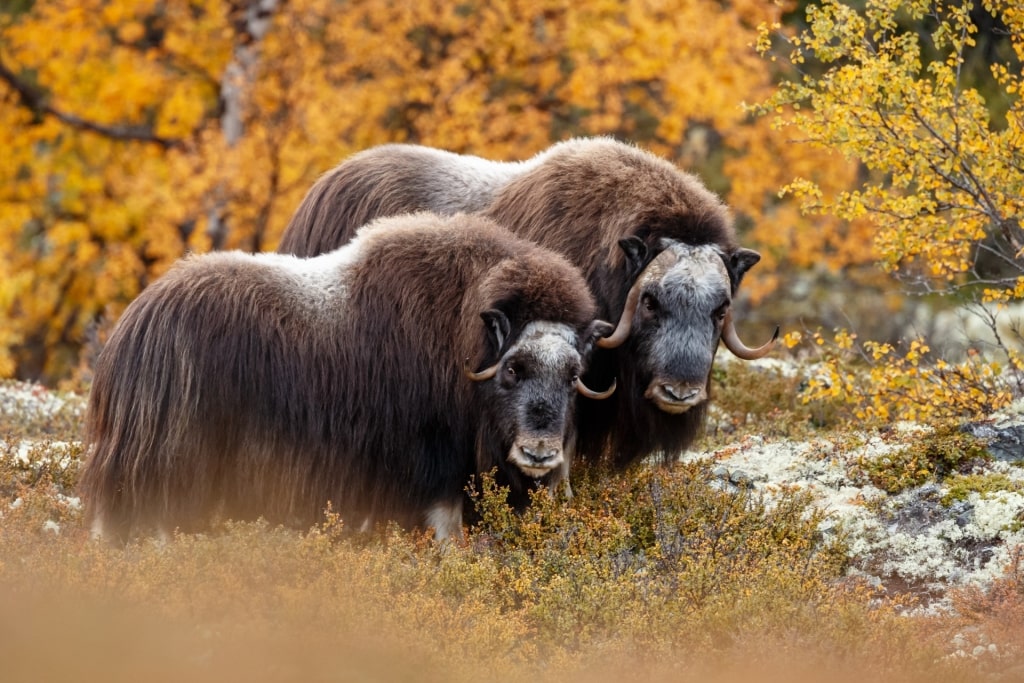
Musk ox
Musk oxen are Greenland’s largest land mammal, referred to as “Umimmak”, which translates to “the long bearded one.” The fur from this animal is considered some of the world’s highest quality, used for clothing and other items like blankets.
That’s not all the musk oxen is known for though, the meat from the animal is considered a delicacy as well. The musk ox is not an endangered species, so is hunted in Greenland.
The lean meat can be used in a wide variety of dishes and maintains its flavor and tenderness when cooked. It’s often used as a substitute for beef.
Most chefs will cook musk ox medium rare to present the finest dish. You’ll find musk ox on many restaurant menus, served as everything from tartare to soup or steak.
Whale Meat
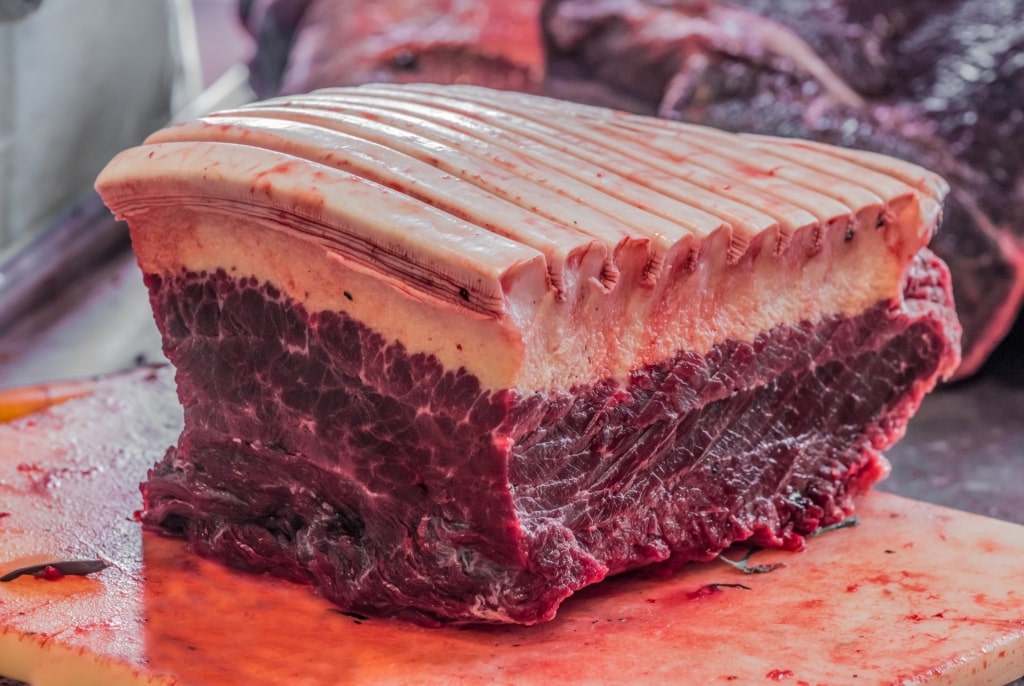
Whale meat
Whale meat has traditionally been an important part of the Greenlandic diet and can be prepared many different ways.
Greenland is home to many different species of whale, from beluga and fin to minke and narwhals, and whales have historically provided food to the Inuit people for thousands of years.
As a large part of their culture, the Inuit rely on whales for the nutrients contained in their meat, skin, and fat to help survive long winters. Whale is most often prepared as steak, served with onions, although it’s also dished up as cured, smoked, and raw or dried, which is similar to beef jerky.
Lumpfish Roe
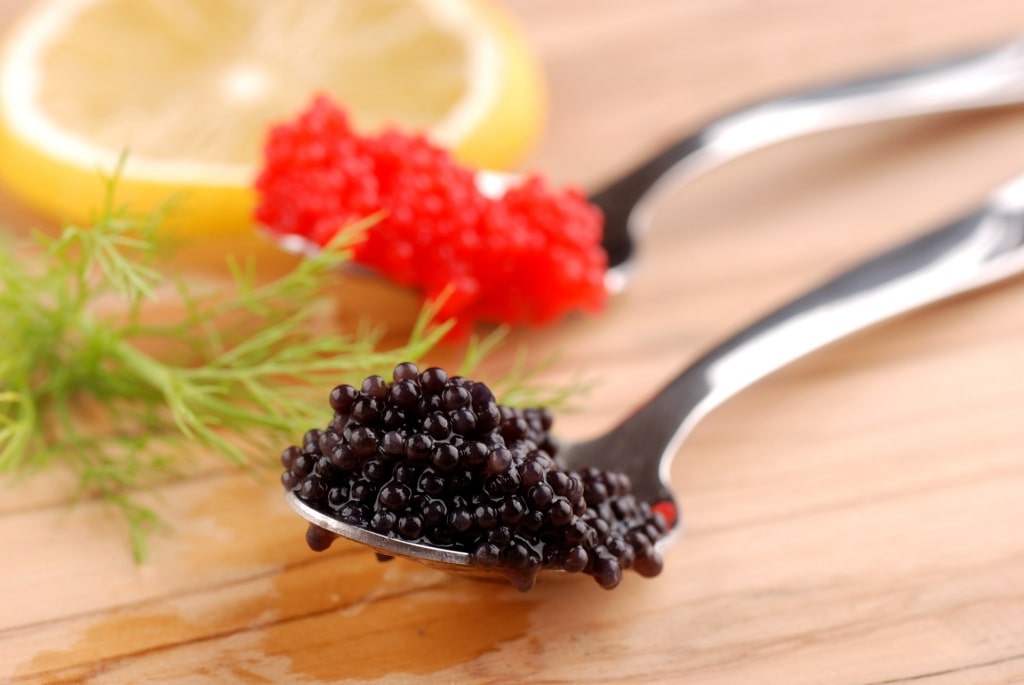
Lumpfish roe
Similar to caviar, lumpfish roe is an appetizer that graces many restaurant menus in Greenland. Lumpfish is one of the top fish in Greenland and the large pearls of its roe are a favorite of locals.
The allure is in the mild, salty, briny flavor and texture as the roe pops when you take a bite. It’s typically served on crackers, or to garnish soup or dips as a pre-dinner snack.
Greenlandic Shrimp
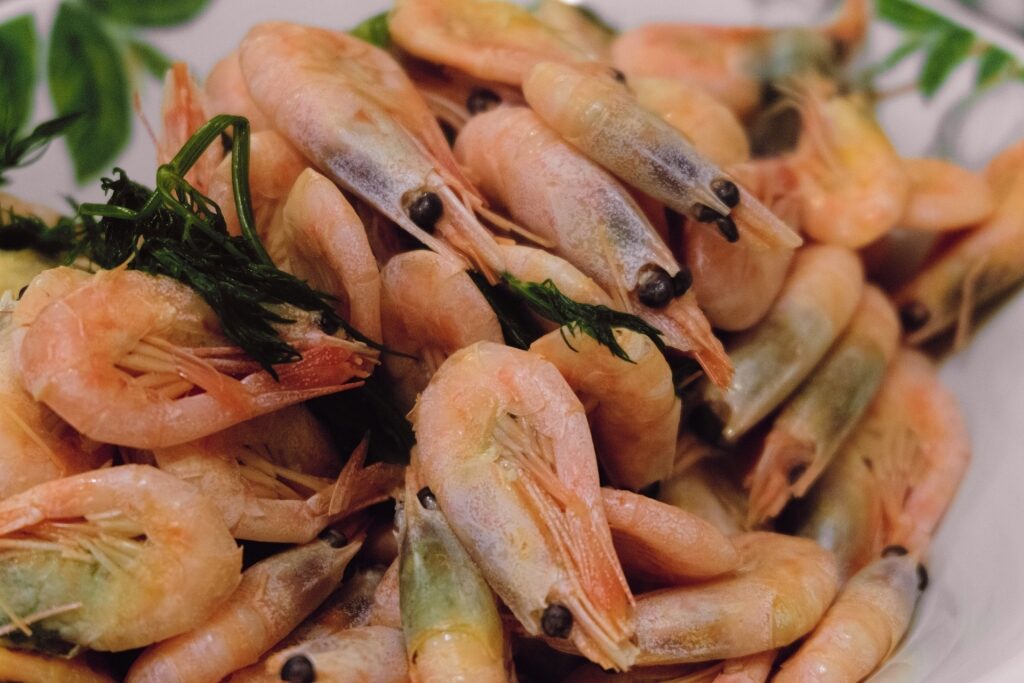
Greenlandic shrimp
Greenlandic shrimp is considered some of the best shrimp in the entire world, due to the extended length of time they take to grow in the Arctic waters.
The country is the world’s largest producer of cold-water shrimp. They’re caught in the wild waters offshore, when they are between four and six years old, at depths up to 1,600 feet.
Once caught, they’re typically boiled and then frozen right away before being served as peel-and-eat shrimp, with a crisp and firm texture and flavorful taste and a hint of sweetness as well.
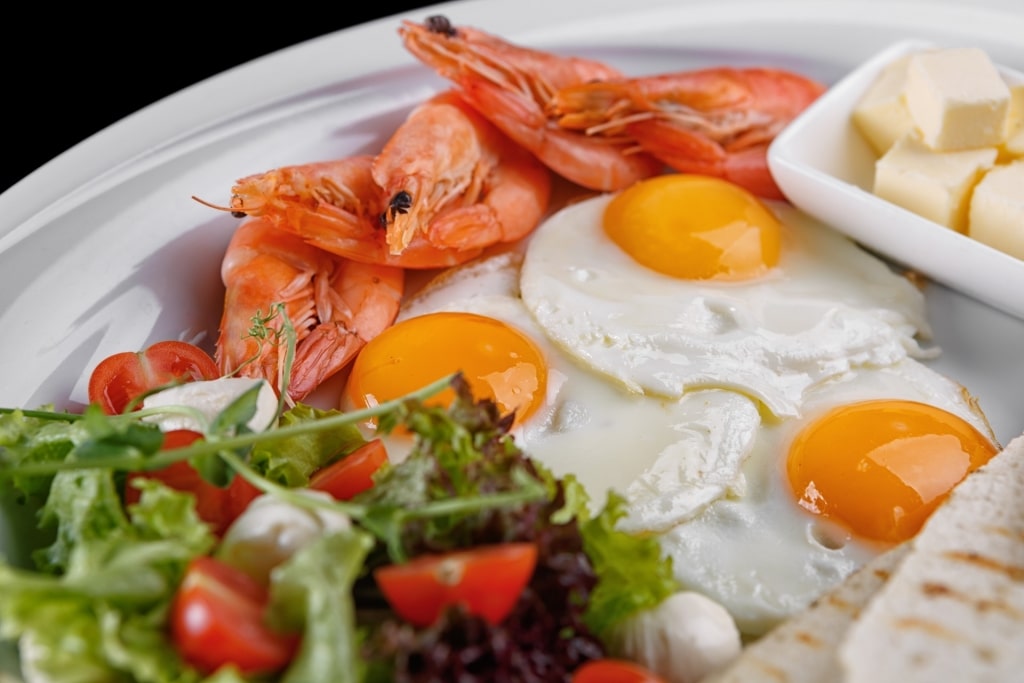
Greenlandic shrimp
Referred to as pink shrimp, deep-water shrimp, and cold-water shrimp, this seafood can be cooked in a wide array of dishes. Whether you enjoy them as peel-and-eat, steamed, grilled, sauteed, in soup or stews, salad or sandwich, they’re a versatile and delicious culinary item at the top of the Greenland food list.
Dried Cod
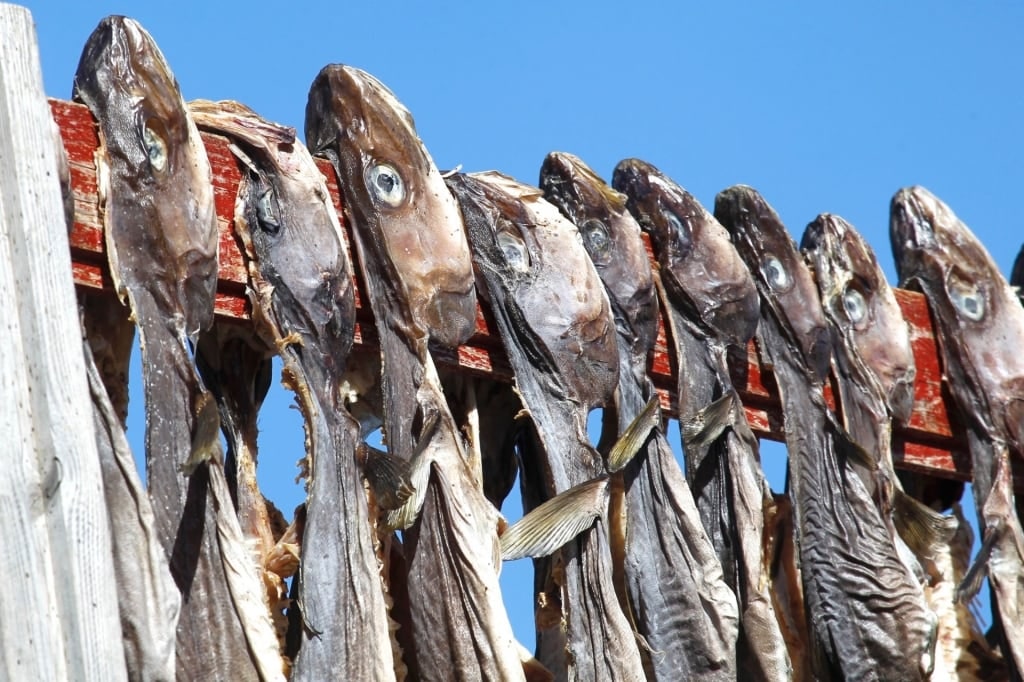
Dried cod
Cod has historically been one of the most important fish in Greenland and the Inuit diet. The abundance of the white fish has allowed for settlers and inhabitants throughout the years to fish and eat.
The very cold Arctic waters allow for the fish to grow slowly, making them incredibly flavorful, as well.
The flaky white fish with a mild taste is extremely versatile as a dish, but one of the most popular ways it’s prepared in Greenland is dried. Dried cod is a favorite snack item, and one of the world’s oldest known preservation methods, used since the time of the Vikings.
After being caught, cod is hung on wooden racks in the open air, and once it’s dried, the storage life lasts several years. Once ready to eat, the fish is mild and savory and traditionally eaten with butter.
Ptarmigan
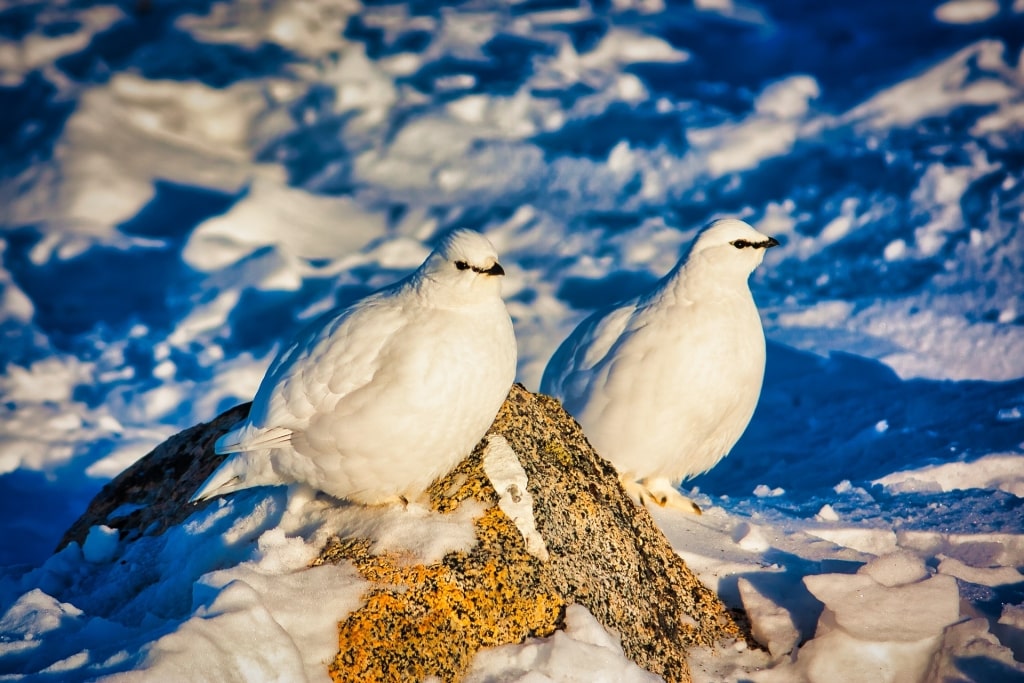
Ptarmigan
The Ptarmigan is Greenland’s only ground-feeding game bird, approximately the size of a small hen. It can be found almost anywhere in the tundra terrain, though typically hides in the nooks of rocks or in bushes.
Ptarmigan are a large part of the gastronomy scene and are considered a delicacy. The versatile meat is gamey, similar to pheasant, and can be cooked in a wide array of methods, such as marinated breast or thigh, served raw or boiled, alongside roasted potatoes.
Additionally, the gizzard contents are used for making ptarmigan schnapps, as the birds eat berries. For a unique taste of Greenland, if you’re not squeamish, try this unusual drink.
Greenlandic Fish
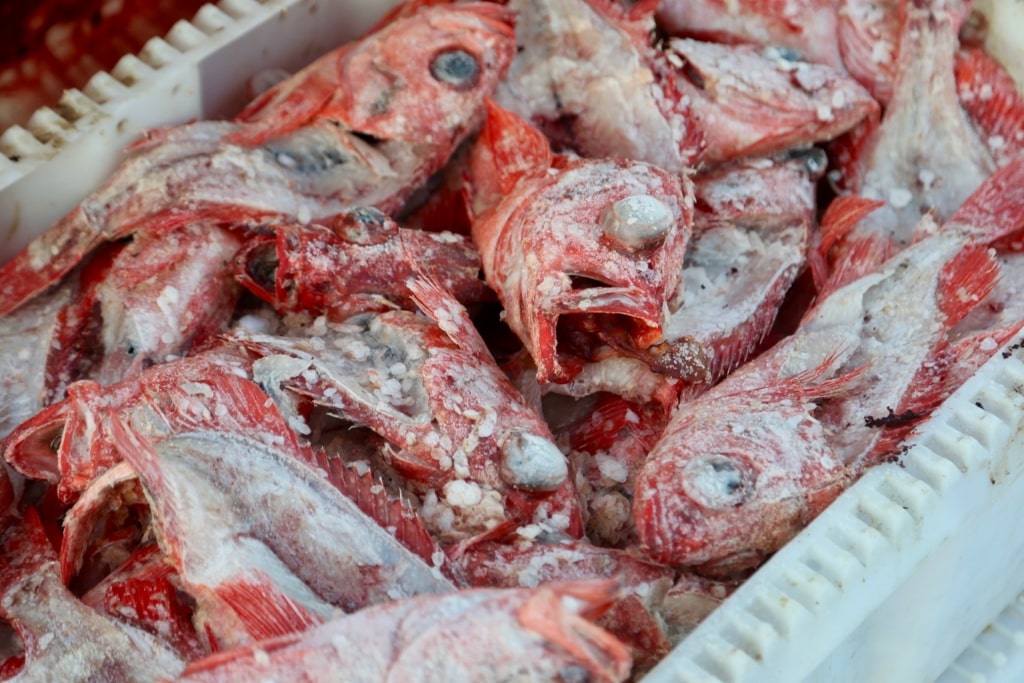
Red fish
Greenland’s frigid and pristine Arctic waters are host to a wide array of delicious fish that are naturally able to grow longer, giving them richer flavor and larger size.
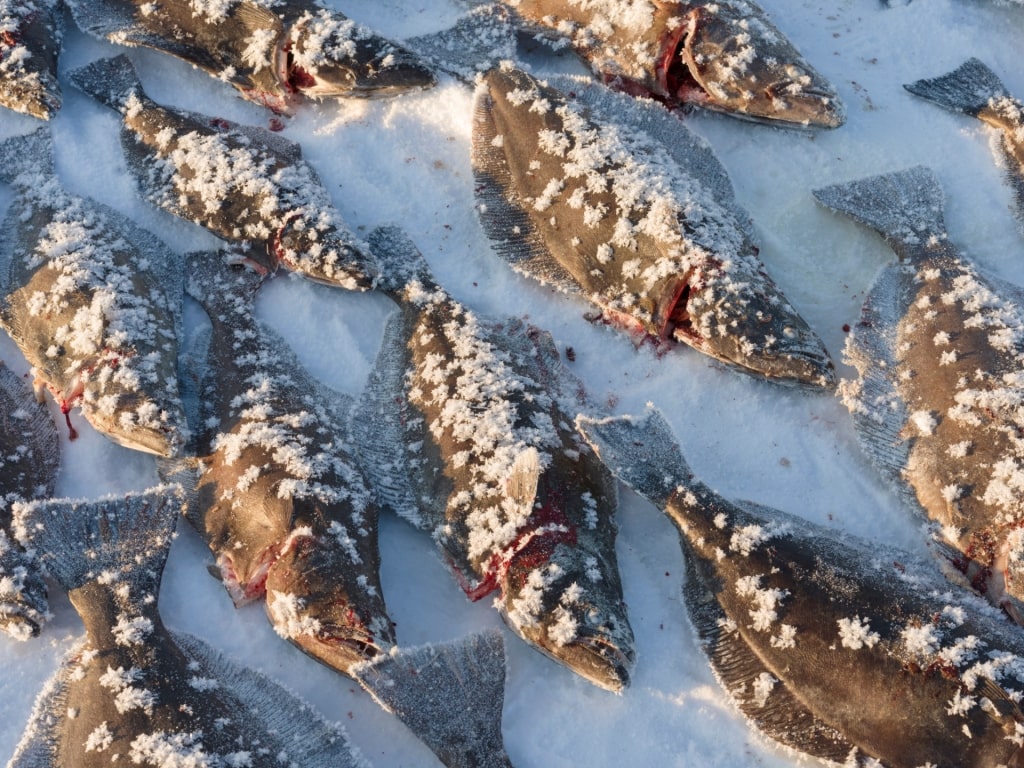
Halibut
Indulge in varieties like Arctic char, wolf fish, red fish, rockfish, cod, and halibut, and enjoy some of the most fresh fish you’ve ever tasted. Tuck into breaded redfish or cod, or enjoy it grilled, roasted, sauteed, in soup, curry, or many other ways.
Catching the fish yourself is one of the best things to do in Greenland, either on a deep-sea fishing adventure with a captain, or traditionally, with your hands in the river. Afterward, your fresh catch will be cooked to your taste for a satisfying meal.
Seal
Seal, or “puisi” is hunted in Greenland (with the exception of lactating females and pups) and is one of the staple meats in the local diet as it’s high in protein and the blubber helps keep humans warm through the harsh winter season.
Arctic seal species such as hooded, harp, and ringed seals provide fatty meat, which is not just part of the national dish of Suaasat, but also prepared in other ways.
The hunted seal is used sustainably, with dyed seal skin used in Greenland’s national dress and almost every other part either eaten or used in different ways. Seal can be boiled, deep fried, marinated, stir-fried, dried, or grilled in steak form. Anything left over is fed to the many sled dogs in Iceland.
Read: Iceland vs. Greenland: Which Should You Visit?
Wild Berries
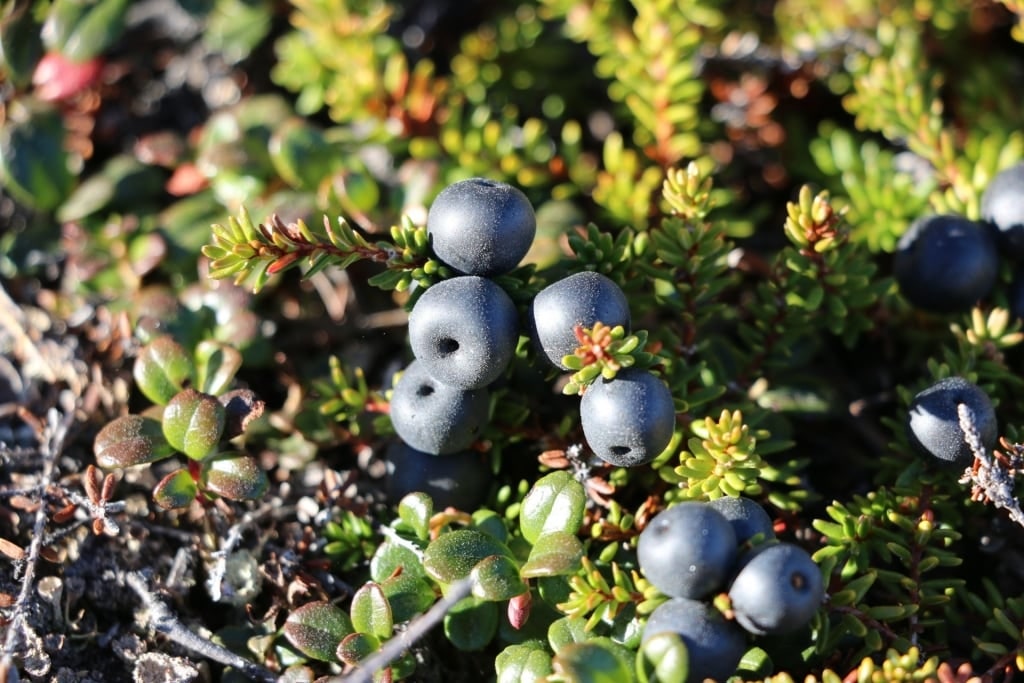
Wild berries
A staple of Greenland cuisine and an important source of vitamins, wild berries grow in low bushes on the tundra, adapted to the high winds. They’re a large part of the Inuit culinary scene in everything from jams to ice cream and compotes, or on their own as a sweet treat.
Late summer and early fall is prime berry-picking season, where you’ll find blueberries, juniper berries, blackberries, and crowberries, a dark purple berry used in jams. The vibrant red alpine bearberries are another favorite, typically served with fish.
Greenlandic Lamb
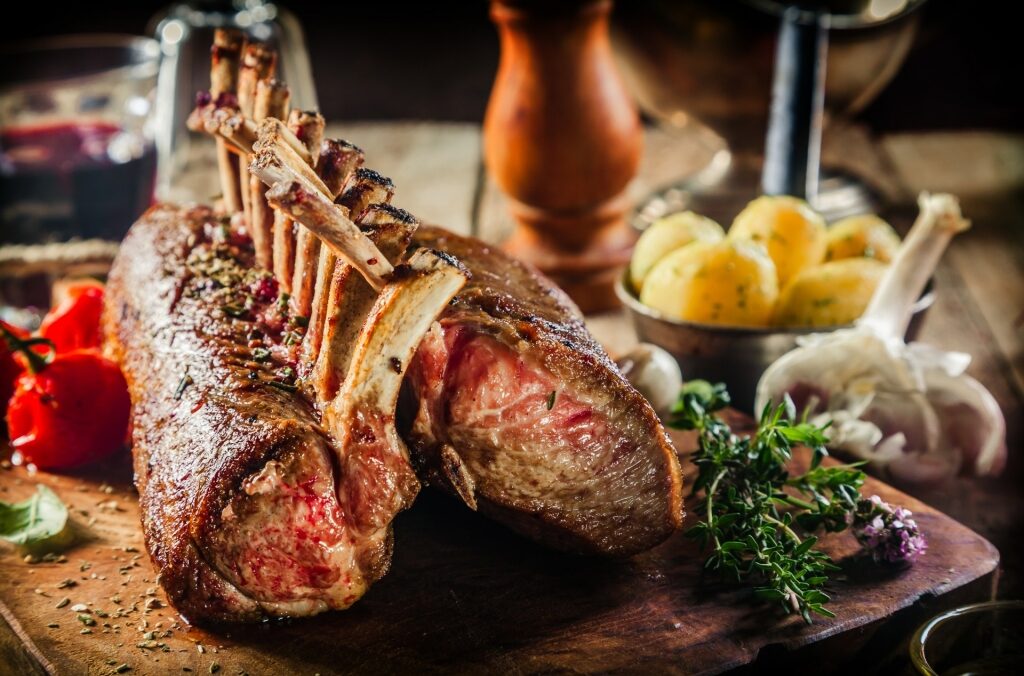
Greenlandic lamb
Lamb, or “sava” is known for being of very high quality in Greenland, particularly in the southern region of the country in places like Qaqortoq, as there is more grass growing there. The sheep are raised free-range, foraging the tundra, making the meat of high quality.
Try lamb soup with carrots, potatoes, celery, and turnips, all of which grow in Greenland, paired with bread. Or order lamb sausage, or a cutlet.
Mussels
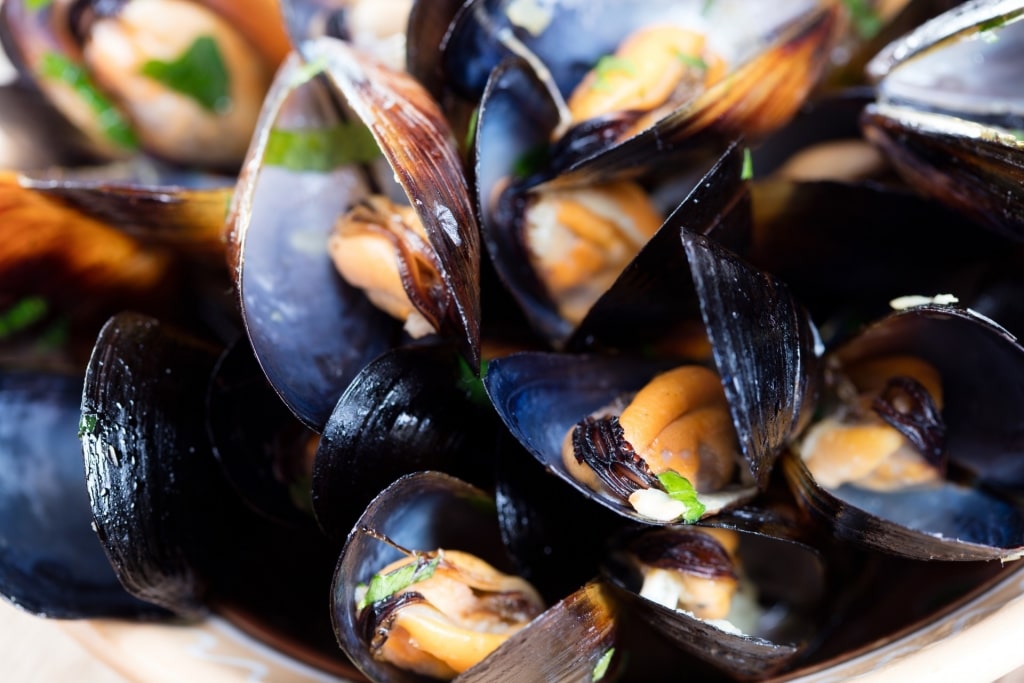
Mussels
Another deliciously fresh seafood item found in Greenland is mussels. Blue mussels are a delicious treat, harvested on the rocks along the shoreline of the country. Low tide is the premier time to go out on the boat to pluck them from the cold Arctic waters.
They’re served raw, or cooked over a fire by the water in seawater for extra salty flavor. If you can’t eat them right away, it’s traditional practice to put seaweed over them to keep them cool and fresh.
Greenlandic Crab
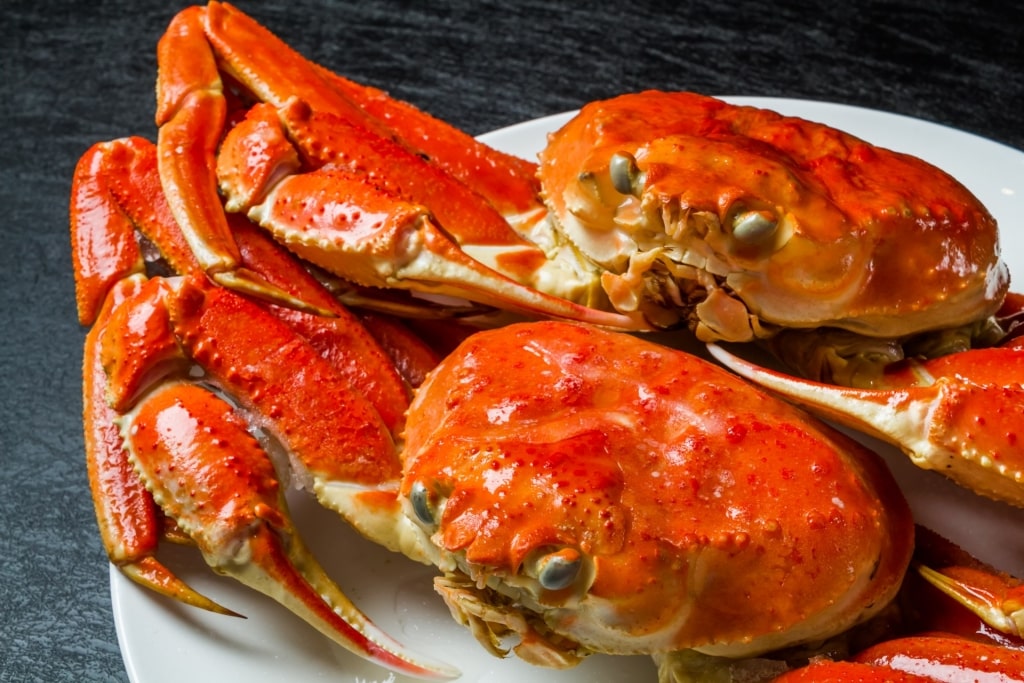
Greenlandic crab
Known for its long legs, Greenlandic crab, or snow crab, is another treasure from the sea enjoyed throughout Greenland.
Snow crabs can be as wide as a human’s arm span and are caught on the west coast of the country. The orange-colored creatures live in very cold waters and are caught once they’ve matured to eight or nine years of age.
The white crab meat has a delicious and mild taste, loved by many. Enjoy cooked crab with lemon and a simple aioli sauce for dipping.
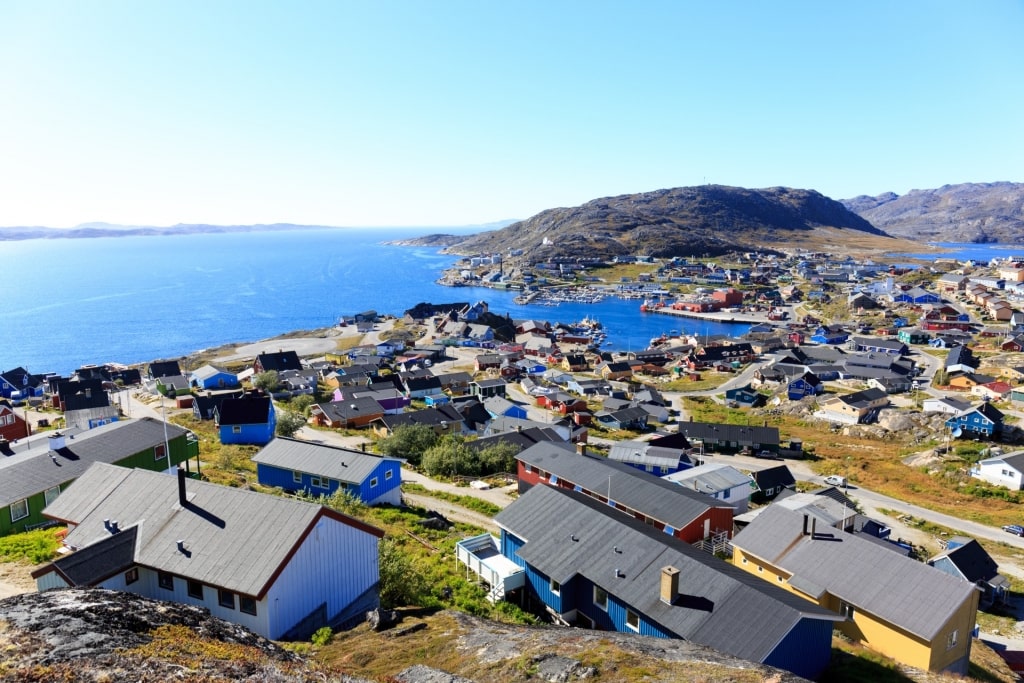
Qaqortoq
Ready to explore Greenland’s food scene? Browse our Greenland cruises and book your adventure today.



